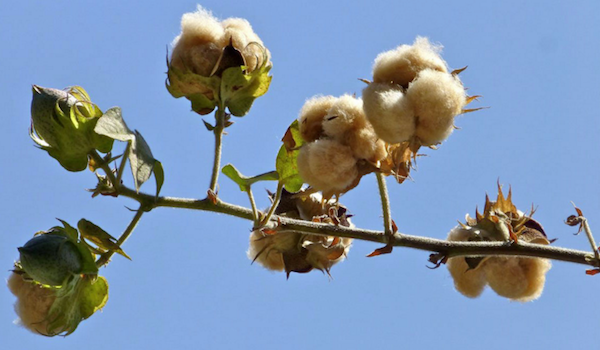
COTON JAUNE

As cotton competition time soon draws to a close, we're publishing a very special excerpt from an article by Sharon Gordon-Donnan that can be read in our current issue, exploring the history of acadian brown cotton. To be in with a chance to win Vincent McKernan's book The Story of Cotton, just follow the link at the end of the page...
Acadian brown cotton blankets are laden with tales of hardship, loss, love and survival. For 200 years these blankets were made as dowry gifts in nearly every home along the rivers, bayous and prairies of southwest Louisiana. A complete dowry included twelve blankets, twelve bed-spreads, six sheets, twelve towels, four mattress covers, a bolster and two pillows. Among many descriptions of the dowry, ‘L’amour de Maman’ describes it accurately, referring to a mother’s desire to pass on the biblical values of both land and family. A mother’s beautiful, skillfully woven blankets remain, to this day, the physical expression of maternal love.

The history of coton jaune, the natural brown cotton used to make these blankets, demonstrates the adaptability of the Acadian people. Already accomplished spinners and weavers, they migrated from France to the New World in 1604. After nearly 150 years of peace and prosperity in Acadie (now New Brunswick and Nova Scotia) their expulsion by the British led them to resettle in the swamps and prairies of lower Louisiana.

There, the Acadian people were met with the basic challenges of finding food and shelter, with a determination and willingness to both learn and adapt. Their Old World crops of wheat, barley and oats were unsuited to the sub-tropical climate, as were flax and wool. The local indigenous population used river reeds to weave their baskets and were not at first cultivating the short staple brown cotton. Somehow, the Acadians recognized this particular fibre as suitable for spinning and weaving their household textiles and clothing.

Scholars have suggested that the brown cotton of Louisiana was introduced from Mexico, where its domestication, cultivation and weaving were practised for centuries. The Acadians hand selected brown cotton seeds that were the easiest to pull away from the cotton boll. Those slippery seeds, which were devoid of hair or fuzz, were specifically chosen to make hand-ginning faster and easier – another example of the Acadian values of independence, resourcefulness and adaptability…
You can read this article in its entirety by picking up a current issue of Selvedge magazine or by ordering one here. To be in with a chance to win Vincent McKernan’s book The Story of Cotton, click here. For more information on this book, visit Third Millennium Publishing; https://tmbooks.com/the-story-of-cotton-hb.html

1 comment
Very nice and informative article.